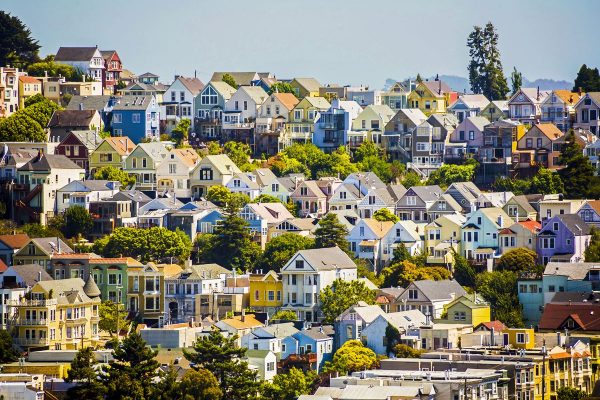
A rising population coupled with a slow build rate may be responsible for California’s housing crisis. And the conversion of rental units into AirBnb rentals hasn’t helped the cause. Amid mounting pressures from pro-housing activists, a sharp increase in rent-burdened households and families experiencing homelessness, California legislators have begun to take action where local NIMBYism (Not in My Backyard) from municipal leaders has thus far fell short. In 2017, five of the 10 most expensive metro areas to purchase a home in the entire country were cities in California, according to the National Association of Realtors.
Consequently, middle class workers are forced to live farther from their jobs, spilling over into low-income neighborhoods, as low-income families struggle to balance paying rent while battling the potential gentrification of their neighborhood. As a result, the rate of homelessness has steadily been increasing with more than one-quarter of the total U.S. homeless population now residing in California.
Last September, Gov. Jerry Brown and state legislature passed a slew of 15 housing bills designed to alleviate the crisis – seven of which are aimed at streamlining permitting, enforcing regional housing production benchmarks and preventing municipalities from down-zoning parcels or rejecting by-right projects.
The bills are also aimed to stimulate new housing spending for affordable units, including a measure that allows for a low-income housing-focused $3 billion bond to be included on the November 2018 statewide ballot and a measure that helps raise up to $250 million a year for low-income housing construction.
Solutions in Sight
A few measures in recent years have provided slight relief, including the 2016 Accessory Dwelling Unit (ADU) ordinance. The ordinance legalized backyard “coach” homes and provided minimum zoning standards for ADUs leading to a surge of applications and nearly doubling the residential density of the state’s single-family zoned lots overnight.
But possibly the most powerful bill, introduced last year, SB 827, targets the root of the issue: extensive parking requirements for new developments, building requirements and zoning restrictions. SB 827 was introduced to override local planning codes in order to raise height limits on buildings while abolishing parking requirements for buildings located nearby mass transit stops.
Introduced by State Senator Scott Wiener, SB 827 looks to require all areas within a half-mile of high-performing transit stops, or within a quarter-mile of bus or transit corridors, allow building heights of 45 to 85 feet, far exceeding what most local zoning commissions allow in an effort to increase housing inventory for transit riders that live near these high performing transit stops.
Sacrificing parking spaces for more housing may also indirectly affect social behavior and increase the use of public transportation thereby lessening traffic and GHG emissions.
While most would applaud more housing, reduced gridlock and increased transit ridership, the bill has also received negative attention from activists concerned that these developments will be too expensive for existing low-income residents near these high-performing transit stops. Recently, several affordable housing, tenants’ rights and transit equity groups sent a joint letter to Senator Wiener protesting that “the vast majority of the new units will be unaffordable to core transit riders. And, since 2001, over 20,000 rent-controlled units have been destroyed, and many households have been displaced due to unlawful evictions and harassment” and further that “SB 827 lacks the necessary mandates or incentives for developers to include some low-income, very-low income or extremely low-income units in these new buildings.” Wiener’s bill also has been criticized by West Hollywood City Councilmembers John D’Amico and Lauren Meister in a recent op-ed on WEHOville.
Although the bill currently does not contain any measures to prevent displacement, it’s reported the bill’s sponsors are working on adding these measures. Further, an increased supply of housing will at least result in some reduction in rental and purchase prices for the time being.

A large number of state non-profits whose primary concerns are housing and poverty alleviation have come out against 827 and provided a case in point of how CA’s progressive activists have actually turned the very considerable amount of public funding they receive against the welfare of the people they purport to serve. This even extends to environmental groups: the Sierra Club by aggressively promoting urban-sprawl policies on a local level has brought the venerable organizations entire legacy into shame and dis-repute. It’s a welcome relief to read a well-reasoned article from someone in environmental advocacy community actually promoting practical measures… Read more »
Hi Manny,
What do you propose those results suggest?
I propose those results say that at any given time there are thousands of rental units available.
According to Zillow, there are over 5,000 rental units available in LA County. (3,000 of them are under $2,000/month)……In West Hollywood alone, there are 256 units available. (50 under $2000/month)
I find these results interesting.